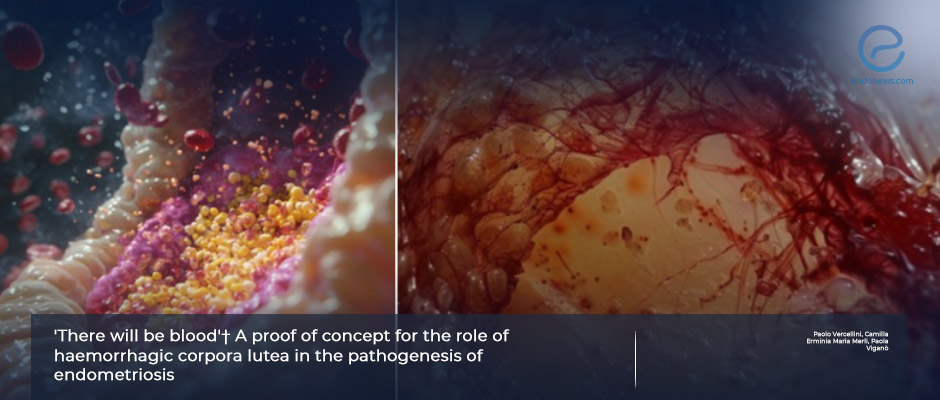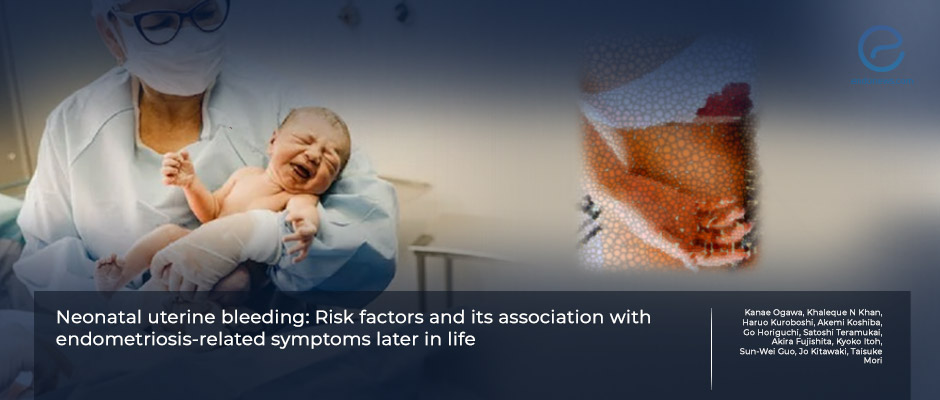A new pathogenetic hypothesis of endometriosis
Recent research has focused on perimenopausal women who experienced hematoperitoneum and lower abdominal pain, subsequently developing deep infiltrating endometriosis within a few months of the initial episode. Ultrasonographic evaluations revealed that a bleeding functional ovarian cyst was the primary cause…
Key Points Lay SummaryFertility outcomes after discoid excision for colorectal endometriosis.
Colorectal endometriosis is one of the most severe forms of deep endometriosis, composing 85% of all bowel lesions. Radical treatment is segmental resection of the bowels, which can cause postoperative severe complications such as rectovaginal fistula and voiding dysfunctions that negatively…
Key Points Lay SummarySpontaneous Conception After Deep Endometriosis Surgery
Deep endometriosis is a severe form of endometriosis where lesions invade deeper than 5 mm into subperitoneal space. Surgical management of the disease is a challenging task requiring a multi-disciplinary approach and significant expertise in the field. Anastomotic leaks, fistula,…
Key Points Lay SummaryNeonatal uterine bleeding at birth and endometriosis later in life
In the first few days after birth, some female newborns bleed from the vaginal route, and this is called newborn uterine bleeding. The overt and occult neonatal uterine bleeding prevalence rates are 3-5% and 25-60% retrospectively. The causative risk factors for…
Key Points Lay SummaryDeep infiltrating endometriosis and postoperative pregnancy outcomes
Although the current ESHRE guidelines state that there is no strong evidence to support surgical intervention to improve the spontaneous pregnancy rate in women with deep infiltrating endometriosis and advise Assisted reproduction technology irrespective of the severity of endometriosis, several studies…
Key Points Lay SummaryComparison of two different surgical approach to deep colorectal endometriosis in terms of postoperative outcomes.
Deep colorectal endometriosis affects one-fifth of women with endometriosis, which is commonly associated with more pelvic pain and severe gastrointestinal symptoms. Three surgical approaches for deep colorectal endometriosis are segmental colorectal resection, full-thickness discoid resection, and shaving operation. Choosing the…
Key Points Lay SummaryA new classification called ENDOGRADE to rate surgical complexity in deep endometriosis.
Correlation with patient outcomes could not be identified in most endometriosis classification systems including the commonly used revised ASRM. Therefore, in addition to grading the depth and invasion pattern of the lesions, there is a need for a classification system to…
Key Points Lay SummaryPostoperative outcomes of laparoscopic rectosigmoid resection for bowel endometriosis.
Rectosigmoid endometriosis comprises 80-85% of all bowel endometriosis cases and can be localized in the rectovaginal septum, uterosacral ligaments, retro-cervical region, and parametrium. Symptoms of rectosigmoid endometriosis include abdominal bloating, constipation-diarrhea, lower-back pain, dyschezia, and sometimes cyclic rectal bleeding. Minimally…
Key Points Lay SummaryWhich surgery for deep endometriosis? Laparoscopic shaving or rectal resection?
This keynote lecture entitled "Deep endometriosis: The place of laparoscopic shaving" was presented by Dr. Jacques Donnez, the director of the infertility research unit at the Catholic University of Louvain, Brussels, Belgium, at the Annual International Medical Conference of the Endometriosis Foundation…
Key Points Lay SummaryUltrasonographic Presurgical Staging and Classification of Endometriosis
Laparoscopic surgery is the gold standard for diagnosing endometriosis, but a preoperative imaging procedure is strongly recommended. Transvaginal sonography by a skilled examiner is not inferior to MRI diagnostics regarding sensitivity and specificity in predicting the extension of deep endometriosis. …
Key Points Lay SummaryPostoperative outcomes of deep intestinal endometriosis surgery.
Invasion of endometriotic lesions to the bowels' mucosal and/or muscular levels is called intestinal deep endometriosis. These lesions are most frequently found in the rectosigmoid colon, followed by the rectum, ileum, appendix, and caecum. The optimal surgical approach to intestinal deep…
Key Points Lay SummaryDiaphragmatic endometriosis
Diaphragmatic endometriosis is a rare clinical condition that may show signs and symptoms like chest pain, right upper quadrant abdominal pain, shoulder pain, pleuritic pain, hemothorax, pneumothorax, hemoptysis, and thoracic endometriosis syndrome while the major part of the patients is…
Key Points Lay SummaryComplex Relation Between Body mass index and endometriosis
This research aimed to find the relationship between BMI and endometriosis especially related to surgical phenotype and lesion location. An observational cohort study was led by Holdsworth-Carson et al, from Australia. The article was recently published in "RBMO" . Many earlier studies report…
Key Points Lay SummaryLimits of endometrioma surgery in infertility patients - Liselotte Mettler, MD, PhD
The removal of endometrioma may affect ovarian reserve because healthy follicles near endometrioma could also be excised during this procedure. Another concern about the ovarian reserve is that it may be already low before the surgery. Anti Mullerian Hormone (AMH)…
Key Points Lay Summary
 By Selma Oransay
By Selma Oransay












